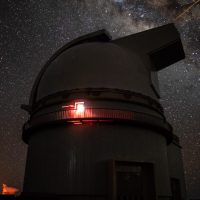This is another fairly common myth about the existing telescopes on Mauna Kea, that most of the telescopes were built without permits or issued “after-the-fact” permits after construction.
This is another myth built on a kernel of truth, the two earliest of the remaining thirteen telescopes were built without proper conservation district use permits in place. What is now Hoku Kea was built by the Air Force Cambridge Research Laboratories and given to the university a couple years later. The UH88 was built by the University of Hawaii in 1968.
As this was the State of Hawaii building on state land, apparently things were a bit lax. In retrospect this is no surprise, the state government was scarcely a decade old at this point and many of the administrative rules and regulations we now take for granted were still being written and implemented.
This is where the myth comes in, as somehow the other telescopes are accused of the same issue. The claim often made is that “most of these structures were un-permitted”. This is often claimed as part of the evidence for mismanagement by the university.
This is incorrect… All of the remaining telescopes were built with proper permits in place. The key permits are the Conservation District Use Permits or CDUP’s that allow the use of state land on the summit of Mauna Kea. Permit numbers and dates are listed in the table below…
Observatory | CDUP Permit | Permit Issue Date | Completion Date |
| UH88 | HA‐954 | 1977 | 1970 |
| Hōkū Keʻa | HA‐954 | 1977 | 1968 |
| CFHT | HA‐527 | 1974 | 1979 |
| IRTF | HA‐653 | 1975 | 1979 |
| UKIRT | HA‐653 | 1975 | 1979 |
| VLBA | HA‐2174 | 1989 | 1992 |
| CSO | HA‐1492 | 1982 | 1986 |
| JCMT | HA‐1515 | 1983 | 1987 |
| Keck 1 | HA‐1646 | 1984 | 1990 |
| Keck 2 | HA‐2509 | 1992 | 1993 |
| Subaru | HA-3462 | 1992 | 1999 |
| SMA | HA-3462 | 1994 | 2003 |
| Gemini | HA‐2691 | 1994 | 2000 |
| TMT | HA‐3568 | 2017 | ? |
The claim that most of the telescopes were built without permits is thus a common, but false assertion. A classic example of a bit of truth being exaggerated into a myth that fits the desired narrative. While this myth is easily shown to be false, those who want it to be true will simply not check.
Result: False with a kernel of truth


